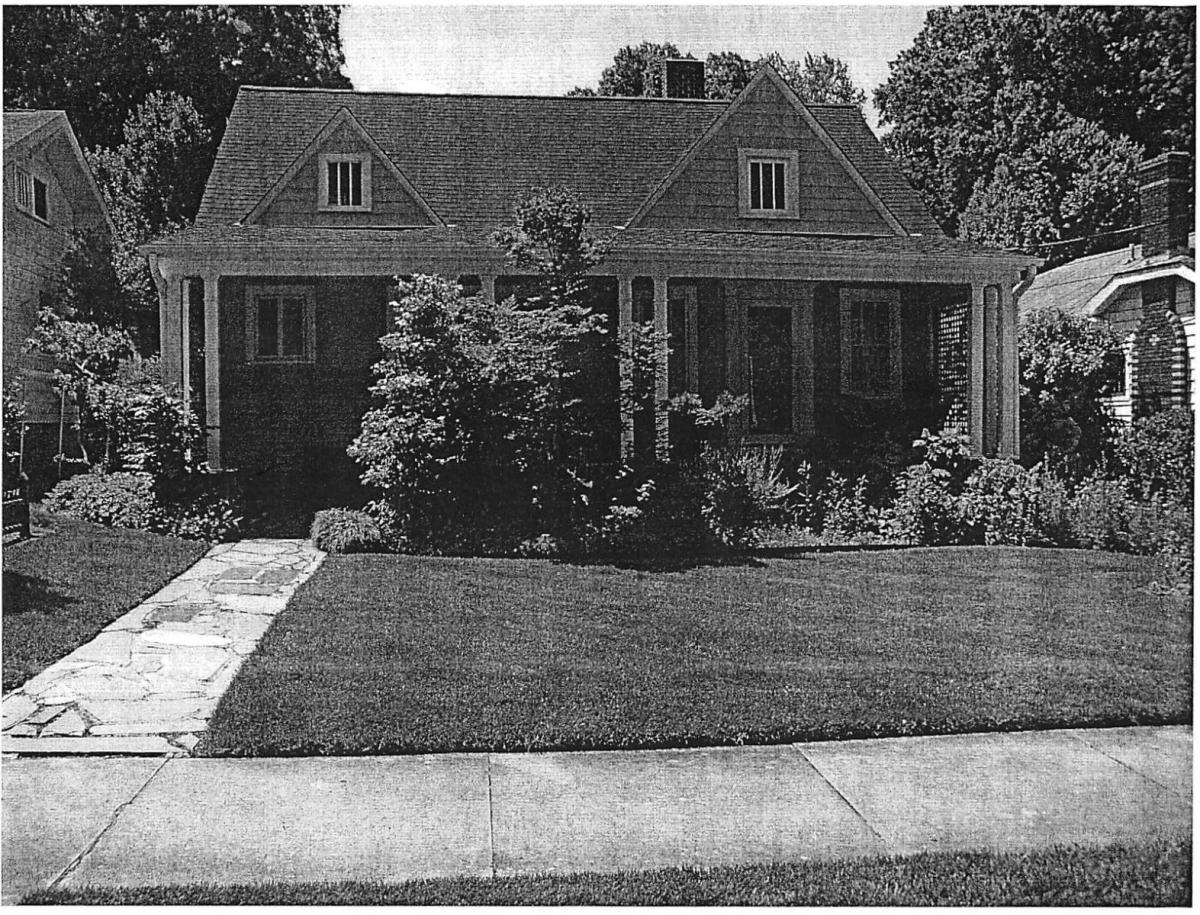The home at 2203 Englewood is a period cottage with side gable roof, two front cross gables, interior chimney, 3-over-1 sash window, glazed and paneled door, and vinyl siding. The shed front porch has replacement wrought-iron posts and railings. Shed ca. 1940. Remodeled, front gabled shed with replacement door and vinyl siding.
The first occupants of the home were William H. Holloway and his wife Clyde B. Holloway.
Occupation(s): Supt. Durham Public Service Co. Assistant cashier, L. Watts Norton
Dates of Ownership: 1928-1938
(The information below in italics is from the Historic Preservation Society of Durham Plaque Application for the Holloway Reed House)
The Wm. Holloway House is located in both the local and national Watts-Hillandale historic districts.
The area is a microcosm of Durham. The Wm. Holloway House is located in the center of a middle class band of shop keepers, pastors, and faculty (along Englewood Avenue and side-streets).
The historically African American, blue collar community of Walltown is to the east (mostly working in tobacco factories). The historically White, blue collar mill village is just to the south (working in the textile mills). The more affluent homes of doctors and business owners along Club Blvd are just to the north.
Watts-Hillandale District houses largely represent typical examples of fashionable residential styles, including the Craftsman bungalow, Foursquare, Colonial Revival, Tudor Revival, and Period Cottage styles. In the late 1920s, taste in houses evolved into the Tudor Revival and various Period Cottage styles.
At 2128 Englewood Avenue, in the late 1930s, Clarence Morris built a substantial brick Elizabethan Cottage with a gabled entrance with arched batten door with a picturesque stone surround. Photographer James Strawbridge, owner of Strawbridge Studios, apparently built the brick Period Cottage with an arched batten door and picturesque roofline at 2601 Englewood Avenue in the late 1930s. Strawbridge lived and operated his photo studio here for many years.
Architecturally, the houses of the Watts-Hillandale Historic District are closest in character to those of nearby Trinity Park. Both districts are characterized by bungalows, Foursquares, Colonial Revival boxes, and period revival-style houses. Although Watts- Hillandale was not Durham's most exclusive subdivision of the era, middle and upper- middle class houses of architectural distinction arose on its lots.
The 1920s and 1930s were the era of the popular bungalow in Durham. Using plans ordered by mail or selected from contractors' guidebooks, contractors built bungalows in all sizes and all stylistic variations. Those built by the relatively affluent homeowners in the Watts-Hillandale and Trinity Park neighborhoods tend to be larger and more carefully finished than bungalows built in working class neighborhoods such as East Durham and Old West Durham.


Add new comment
Log in or register to post comments.